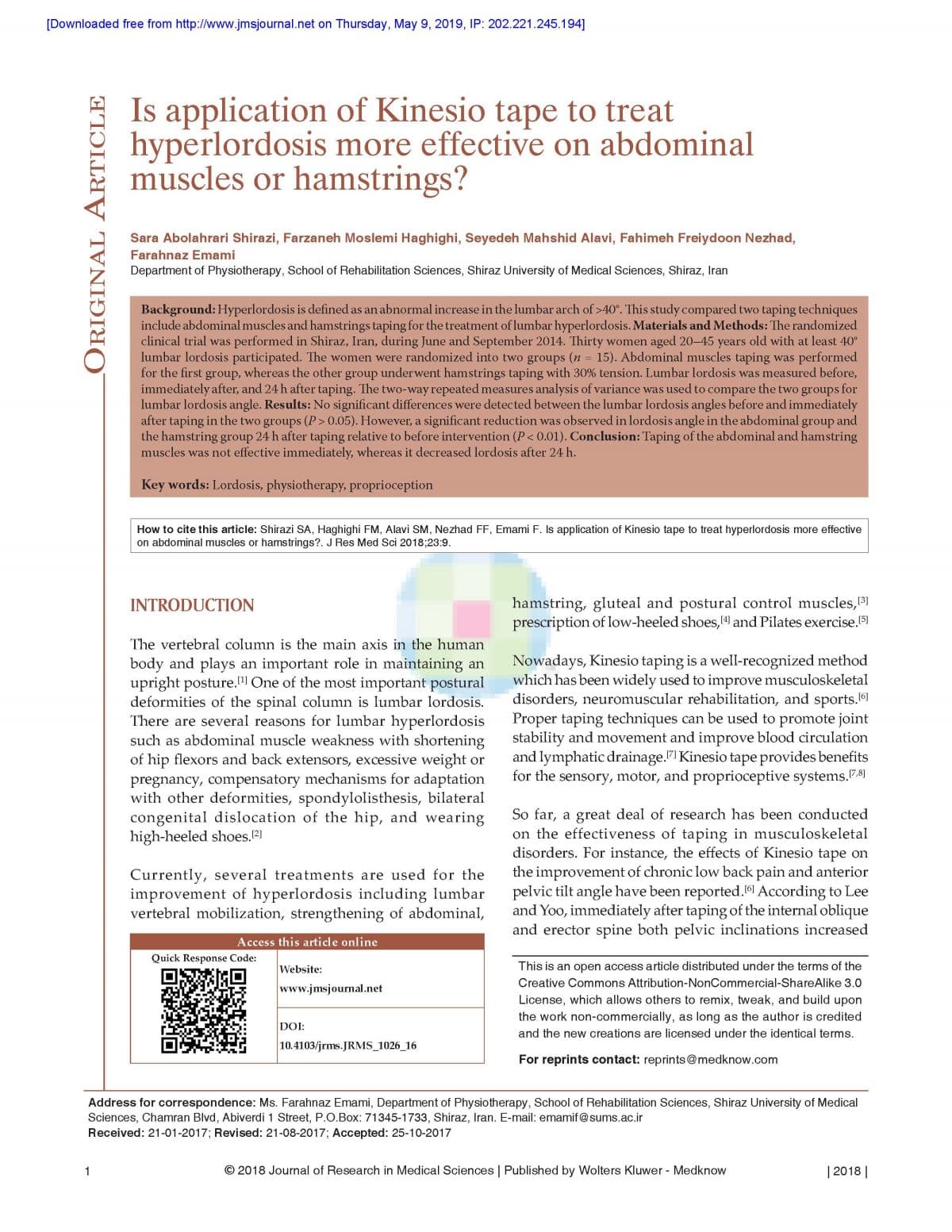Is application of Kinesio tape to treat hyperlordosis more effective on abdominal muscles or hamstrings?
Sara Abolahrari Shirazi, Farzaneh Moslemi Haghighi, Seyedeh Mahshid Alavi, Fahimeh Freiydoon Nezhad,
Farahnaz Emami
Department of Physiotherapy, School of Rehabilitation Sciences, Shiraz University of Medical Sciences, Shiraz, Iran
Abstract
Background: Hyperlordosis is defined as an abnormal increase in the lumbar arch of >40°. This study compared two taping techniques include abdominal muscles and hamstrings taping for the treatment of lumbar hyperlordosis.
Materials and Methods: The randomized clinical trial was performed in Shiraz, Iran, during June and September 2014. Thirty women aged 20–45 years old with at least 40° lumbar lordosis participated. The women were randomized into two groups (n = 15). Abdominal muscles taping was performed for the first group, whereas the other group underwent hamstrings taping with 30% tension. Lumbar lordosis was measured before, immediately after, and 24 h after taping. The two‑way repeated measures analysis of variance was used to compare the two groups for lumbar lordosis angle.
Results: No significant differences were detected between the lumbar lordosis angles before and immediately after taping in the two groups (P > 0.05). However, a significant reduction was observed in lordosis angle in the abdominal group and the hamstring group 24 h after taping relative to before intervention (P < 0.01).
Conclusions: Application of Kinesio tape on the abdominal muscles and hamstrings could reduce hyperlordosis in females after 24 h. This reduction was more significant after taping of the abdominal muscles.
Keywords: Lordosis, Physiotherapy, Proprioception
Ms. Farahnaz Emami, Department of Physiotherapy, School of Rehabilitation Sciences, Shiraz University of Medical Sciences, Chamran Blvd, Abiverdi 1 Street, P.O.Box: 71345‑1733, Shiraz, Iran. E‑mail: emamif@sums.ac.ir\
Shirazi SA, Haghighi FM, Alavi SM, Nezhad FF, Emami F. Is application of Kinesio tape to treat hyperlordosis more effective
on abdominal muscles or hamstrings?. J Res Med Sci 2018;23:9.




